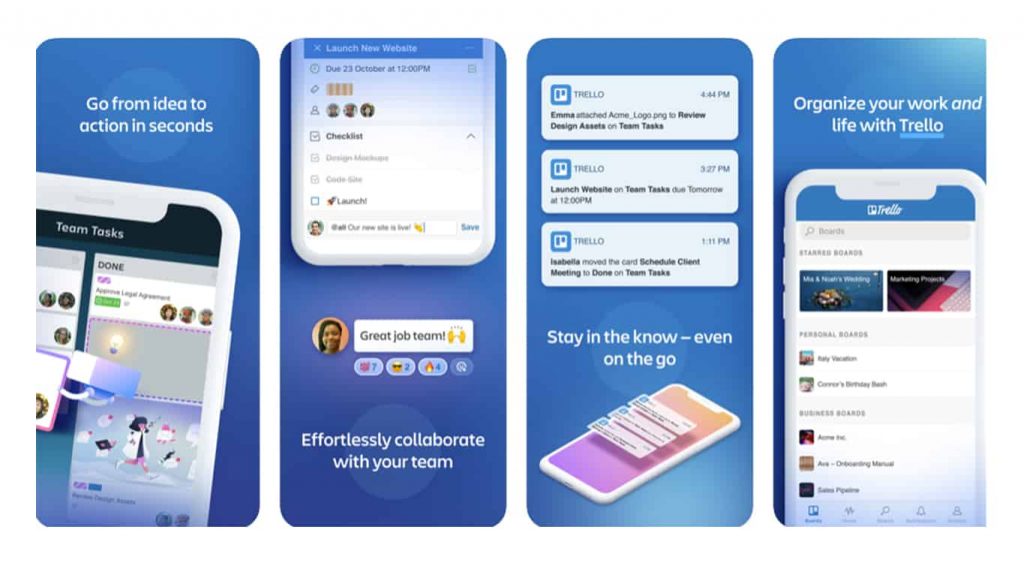In the rapidly evolving landscape of mobile applications, creating a successful mobile app requires a thorough understanding of user needs, market trends, and the latest technological advancements. To ensure your app stands out and delivers value to its users, follow the tips and considerations for successful mobile app development in 2023.
Creating a Successful Mobile App

When developing a mobile app, it’s essential to consider the target audience and the app’s purpose. Depending on the focus of the app, whether it’s customer-oriented or business-oriented, there are specific considerations and strategies to ensure its success. Let’s explore the key pointers for creating a successful mobile app in both customer-oriented and business-oriented contexts.
Suggested Read: How Much Does App Development Cost in 2023?
Customer-Oriented Mobile App

Understand Your Target Audience
Conduct thorough market research to understand your target audience’s demographics, preferences, and pain points. Gain insights into their needs, behaviors, and expectations to align your app’s features and functionalities accordingly.
User-Centric Design
Design the app with a strong focus on providing an intuitive and seamless user experience (UX). Incorporate user-friendly navigation, visually appealing interfaces, and interactive elements. Conduct user testing and gather feedback to iterate and optimize the design.
Personalization and Customization
Allow users to personalize their app experience by providing options for customization. Tailor content, recommendations, and notifications based on user preferences and behavior. Personalization enhances user engagement and encourages long-term app usage.
Seamless Integration with Device Capabilities
Leverage the native capabilities of mobile devices, such as camera, location services, push notifications, and social media integration, to enhance the user experience. Ensure smooth integration with device features to provide a seamless app experience.
Performance Optimization
Optimize the app’s performance to ensure fast loading times, smooth navigation, and minimal crashes or errors. Optimize images, compress data, and utilize caching techniques to reduce load times. Regularly test the app’s performance across different devices and network conditions.
Social Sharing and Virality
Integrate social sharing features that allow users to share app content, achievements, or recommendations with their social networks. Encourage users to invite friends and provide incentives for referrals to drive organic growth and virality.
Continuous Feedback and Iteration
Implement feedback mechanisms within the app to collect user opinions, suggestions, and bug reports. Actively listen to user feedback and iterate on the app based on their needs and preferences. Regularly release updates to address issues and introduce new features.
Suggested Read: How to Write a Business Plan for a Mobile App Startup?
Business-Oriented Mobile App

Define Clear Objectives
Clearly define the objectives of your business-oriented mobile app. Determine how it will support your business goals, such as increasing sales, improving productivity, or enhancing customer engagement. Align the app’s features and functionalities with these objectives.
Streamlined Workflows and Productivity
Focus on improving business processes and increasing productivity through the app. Simplify complex tasks, automate repetitive processes, and provide intuitive interfaces for employees or business partners. Streamlined workflows will contribute to better efficiency and user satisfaction.
Data Security and Privacy
Ensure robust security measures to protect sensitive business data and customer information. Implement secure authentication, encryption, and data storage practices. Comply with industry regulations and privacy standards to build trust among users and safeguard their data.
Integration with Existing Systems
Integrate the app seamlessly with existing business systems, such as customer relationship management (CRM), enterprise resource planning (ERP), or inventory management systems. Enable data synchronization and provide a unified experience for users accessing multiple systems.
Analytics and Performance Tracking
Incorporate analytics and reporting capabilities to monitor app usage, user behavior, and key performance metrics. Gain insights into user engagement, conversion rates, and business outcomes. Utilize this data to make informed decisions and identify areas for improvement.
Scalability and Future Expansion
Design the app with scalability in mind to accommodate future growth and feature enhancements. Consider the potential need for integrating with new technologies, accommodating increased user load, or expanding functionality to meet evolving business requirements.
Seamless Collaboration and Communication
Facilitate effective collaboration and communication among team members, clients, or business partners through the app. Implement features such as real-time messaging, file sharing, or project management tools to enhance collaboration and streamline communication.
10 Tips to Create a Successful Mobile Application
By following these detailed tips, you can increase the chances of creating a successful mobile application that resonates with users, addresses their needs, and achieves your business goals.
Thorough Market Research
To develop a successful mobile application, start by conducting comprehensive market research. Gain a deep understanding of your target audience, their needs, preferences, and pain points. Analyze competitors to identify gaps in the market that your app can fill. This research will help you position your app effectively and ensure that it resonates with your intended users.
Clear Purpose and Unique Value Proposition
Define a clear purpose for your mobile application. Identify the problem it solves or the need it fulfills. Clearly articulate its unique value proposition and how it offers a better solution compared to existing alternatives. This clarity will guide your development process and ensure that your app provides a compelling reason for users to choose it.
User-Centric Design
Prioritize user experience (UX) when designing your mobile application. Create an intuitive, visually appealing, and user-friendly interface. Keep the design simple and ensure ease of navigation across different devices and screen sizes. Put yourself in the users’ shoes and focus on delivering a seamless and enjoyable experience.
Performance Optimization
Optimize your mobile app’s performance to deliver a smooth and responsive user experience. Minimize loading times by optimizing code, reducing unnecessary network requests, and compressing images and other media. Pay attention to app size optimization to make it easily downloadable and installable for users.
Platform Compatibility
Consider the target platform(s) for your mobile app, such as iOS, Android, or both. Design and develop your app to be compatible with the platform’s guidelines, conventions, and user expectations. Adapt your app to leverage the unique features and capabilities of each platform.
Security and Data Privacy
Implement robust security measures to protect user data and maintain privacy. Encrypt sensitive data, implement secure authentication mechanisms, and comply with data protection regulations. Users value their privacy, and ensuring their data is secure builds trust and enhances the overall user experience.
Seamless Integration
Integrate your mobile app with relevant APIs, services, or platforms to enhance its functionality and provide a seamless user experience. Examples include social media integration, payment gateways, or location-based services. These integrations can add value to users and make your app more versatile.
Regular Testing and Quality Assurance
Conduct thorough testing and quality assurance throughout the development process. Test your app for compatibility, performance, and usability. Use both automated testing tools and real-user testing to identify and fix bugs, improve functionality, and validate the user experience.
Continuous Improvement
Listen to user feedback and be responsive to their needs. Continuously iterate and improve your app based on user feedback, market trends, and your own observations. Release regular updates that address user concerns, introduce new features, and enhance the overall app experience.
Effective Marketing and Promotion
Develop a comprehensive marketing strategy to generate awareness, attract users, and increase app downloads. Utilize social media platforms, content marketing, influencer collaborations, and targeted advertising to reach your target audience. Implement app store optimization (ASO) techniques to improve visibility in app stores and encourage positive user reviews and ratings.
Suggested Read: How to Upload an App on Google Play
Analytics and Metrics
Integrate analytics tools into your app to track and measure key performance indicators (KPIs). Monitor user acquisition, engagement, retention rates, and in-app purchases. Analyze the data to gain insights into user behavior, identify areas for improvement, and make data-driven decisions.
Support and Customer Engagement
Provide responsive customer support channels within your app to address user queries, issues, or feedback. Encourage user engagement through features like in-app messaging, user communities, or feedback forms. Building a strong relationship with your users enhances their satisfaction and increases their loyalty.
Stay Updated with Technology Trends
Stay abreast of the latest technology trends, frameworks, and development tools. Embrace new technologies and features that can enhance your app’s functionality and provide a competitive edge. Keeping up with the latest trends allows you to offer innovative solutions and stay ahead of the competition.
Monetization Strategy
If your app is intended to generate revenue, carefully consider the monetization strategy. Choose a strategy that aligns with your app’s purpose, target audience, and market conditions. Options include in-app purchases, subscriptions, advertisements, or a freemium model. Evaluate the pros and cons of each option and select the one that best suits your app.
Frequently Asked Questions (FAQs)
Market research is crucial as it helps you understand your target audience, identify market gaps, and position your app effectively. It provides insights into user needs, preferences, and competition, allowing you to develop a successful app that meets market demands.
A successful mobile app is one that effectively solves a problem or fulfills a need for its users. It offers a unique value proposition, delivers a great user experience, performs well, and provides continuous improvements based on user feedback.
Prioritize user experience (UX) by creating an intuitive and visually appealing interface. Conduct user testing, gather feedback, and iterate on the design to align with user preferences. Keep the design simple, emphasize ease of navigation, and optimize for different devices and screen sizes.
App performance optimization is crucial for a successful mobile app. Users expect fast, responsive, and reliable performance. Optimizing loading times, minimizing app size, and writing efficient code contribute to a smooth user experience and positive user reviews.
The choice depends on your target audience and their preferences. Analyze market share, user demographics, and revenue potential for each platform to make an informed decision. Developing for both platforms can broaden your user base, but it requires additional resources and expertise.
Implement robust security measures such as data encryption, secure authentication, and compliance with data protection regulations. Prioritize user privacy, handle sensitive data responsibly, and regularly update security features to protect user information.
Seamless integration with relevant APIs, services, or platforms enhances your app’s functionality and user experience. Integration examples include social media, payment gateways, or location-based services. It can provide added value to users and differentiate your app from competitors.
Testing throughout the development process helps identify and fix bugs, ensure compatibility, and validate the app’s functionality. It ensures a high-quality user experience and minimizes issues that could lead to negative user reviews or app abandonment.
Develop a comprehensive marketing strategy that includes social media marketing, content creation, influencer collaborations, and targeted advertising. Implement app store optimization techniques, encourage positive user reviews, and engage with your target audience to increase app visibility and downloads.
Integrate analytics tools to track and measure key performance indicators (KPIs) such as user acquisition, engagement, retention rates, and in-app purchases. Analyze data insights to make informed decisions, improve app performance, and drive continuous improvements.
Choose a monetization strategy that aligns with your app’s purpose and target audience. Options include in-app purchases, subscriptions, advertisements, or a freemium model. Consider user preferences, market trends, and revenue potential when deciding on the best monetization approach.
Final Thoughts
Creating a successful mobile application in 2023 requires a comprehensive approach that encompasses thorough market research, user-centric design, optimized performance, robust security measures, effective marketing strategies, continuous improvement through user feedback and updates, and staying abreast of technological advancements. By following these detailed steps and considering the evolving landscape of mobile app development, you can develop a mobile app that not only meets user expectations but also stands out in the competitive mobile app market of 2023.




